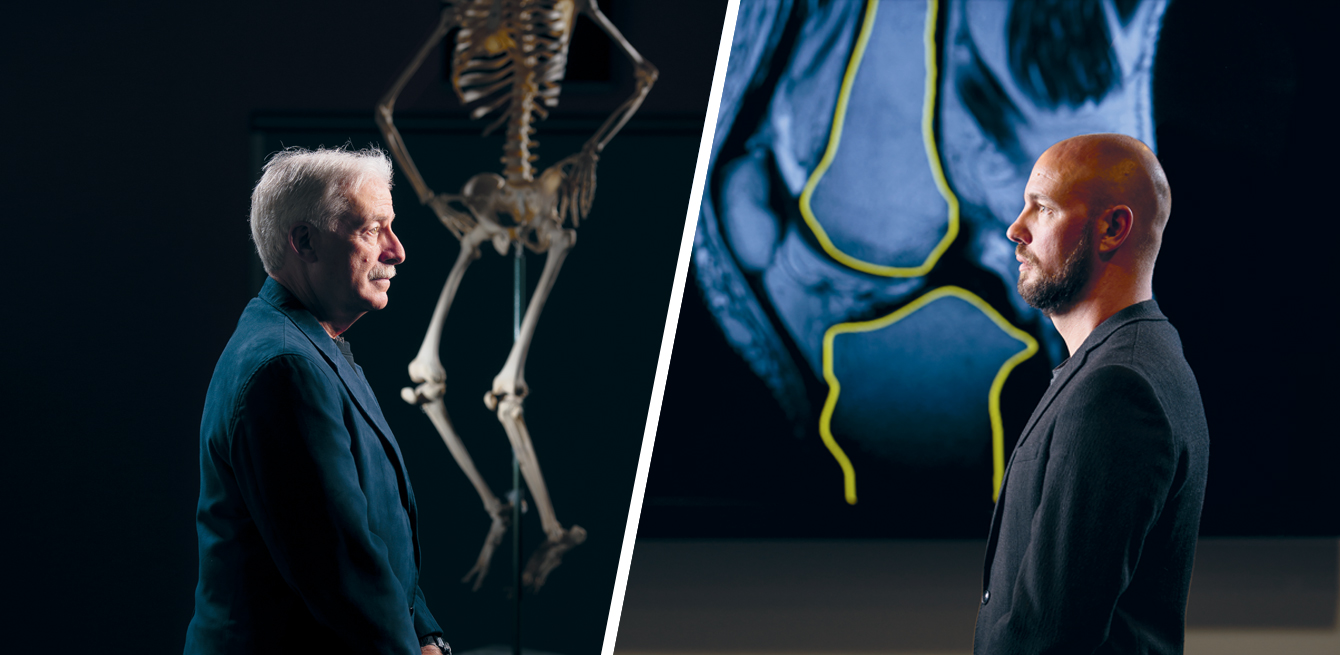
Julien Favre is joint director of the Swiss BioMotion Lab. Thomas Andriacchi, Professor at Stanford University and at the Palo Alto VA, supports this state-of-the-art laboratory.
A room full of cameras, electrodes and force sensors. on computer screens 3D humanoids and countless graphics. at first glance, the gait laboratory at the Nestlé Hospital looks like a film studio. Except that here, we don’t record actor movements, but patients suffering from osteoarthritis to understand the way they walk. If other research institutes in the world also study gait of osteoarthritic patients, the Lausanne University Hospital (CHUV) has developed an innovative approach.
“Our researches are not limited to describe knee movement during walking, our work also aims at modifying this movement and understanding how it affects cartilage and bone properties,” says Julien Favre, who founded the Swiss BioMotion Lab (SBML) with Professor Brigitte Jolles-haeberli at the CHUV.
Their novel approach to joint diseases views a healthy knee as a system where the components – movement, structure and biology – are adapted.
From this perspective, osteoarthritis is viewed as a break down in the equilibrium among components. This global approach brings together the three components, which are traditionally analyzed separately.
Julien Favre chose this approach after his phd in Biomechanics at the Swiss Federal Institute of Technology (EPFL), which focused on knee movement after anterior cruciate ligament injuries. “Everything suggested that limiting the analysis to the movement of the joint was not enough to understand its complexity and the conditions that affect it. We needed to study other components, and, if possible, together.” this observation leaded him to the BioMotion Lab of Dr Andriacchi, a Professor of Mechanical Engineering and Orthopaedic Surgery, a father of Biomechanics, and Pioneer in the multiparametric analysis of osteoarthritis at Stanford University in California.
After five years of successful research in the United States, Julien Favre joined the CHUV. in 2014, he co-founded the SBML, the little brother and partner to the word renowned US laboratory.
SBML researchers develop augmented reality techniques to offer individualized advices to the patients in order to improve their walking patterns. This is expected to reduce pain and slow down disease development.
In California, their colleagues work on better understanding knee mechanics and developing new interventions adapted to different patient profiles. The collaboration between the two laboratories goes beyond sharing scientific knowledge and analysis techniques, as researchers regularly travel between the Swiss and American BioMotion Labs.
The CHUV and the stanford biomotion lab currently engage in a researcher exchange programme.
This combined research is critical to improve the, quite limited, therapeutic options for osteoarthritis, a painful and debilitating joint disease affecting nearly one-third of the population over 65 years old.
Lab's presentation